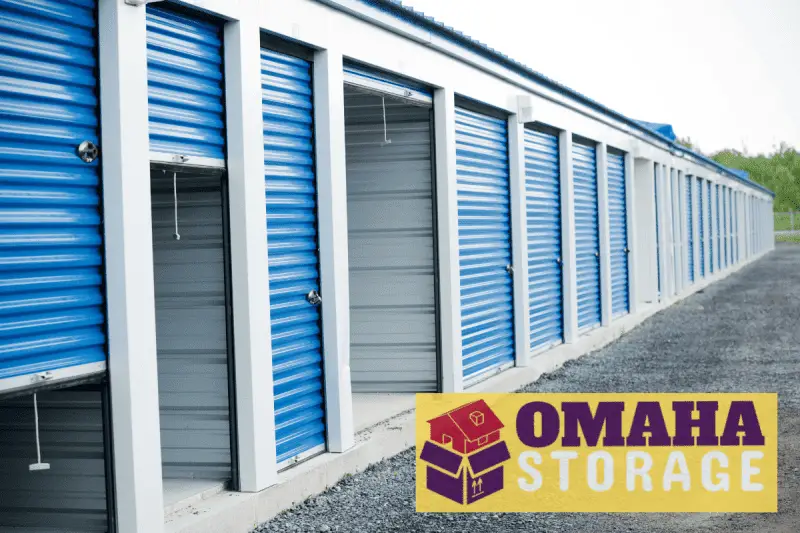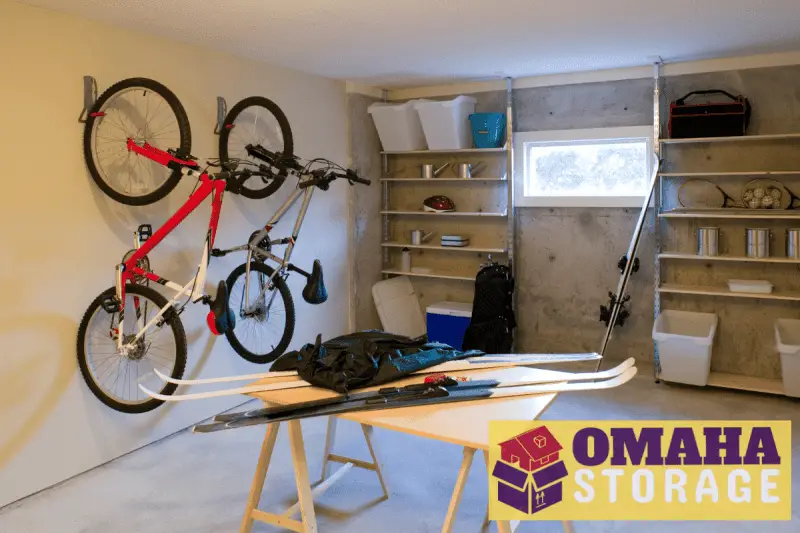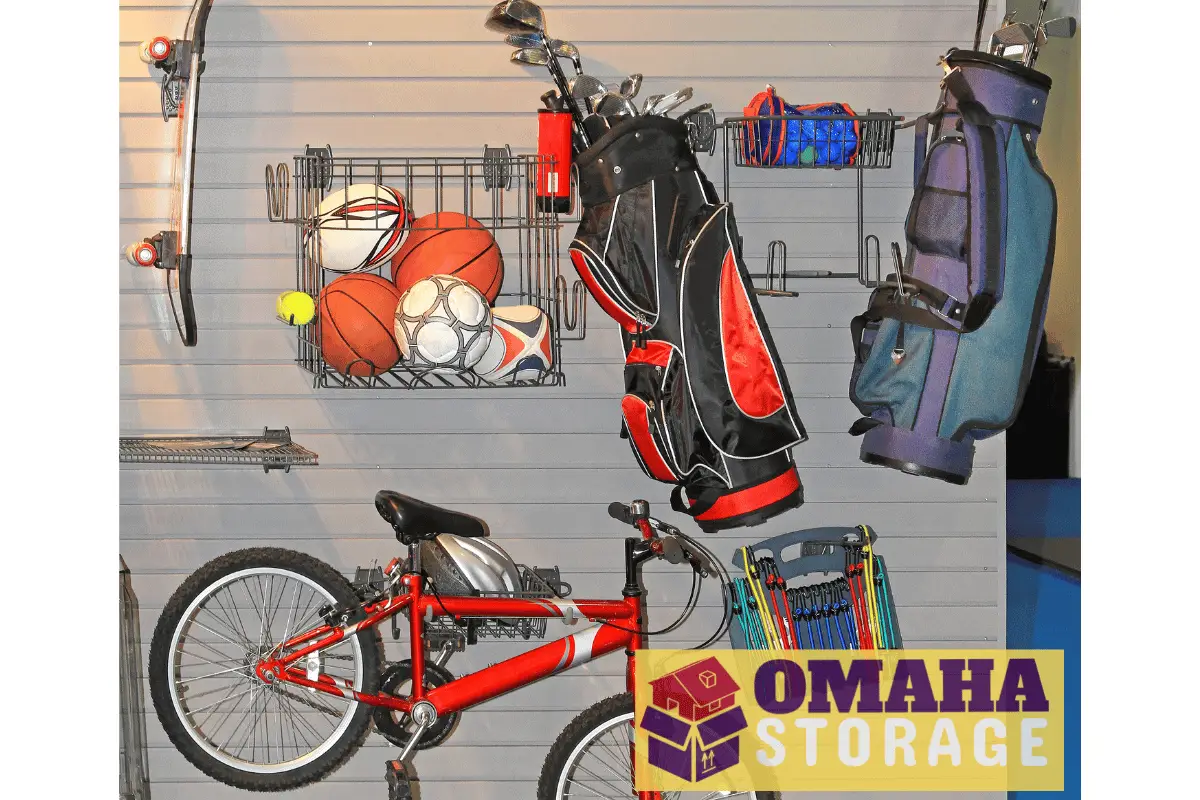Sports and recreational equipment can take up a lot of space in your home. Imagine having a kayak, a set of golf clubs, and a collection of skis sitting in your garage — these items can be difficult to store although they don’t get used often.
Sports equipment storage units provides an excellent solution for this problem. You get a safe, secure, and accessible place to store your equipment when you’re not using it.
Keep reading as we explore the advantages of using self storage to hold your sports and recreational equipment, along with types of equipment that are suitable for self storage, and things to consider when choosing a self storage unit.
Sports Equipment Storage Units for Extra Space
The most significant benefit is that storage frees up space in your home — big time.
You can store your equipment in an offsite unit, which means you don’t have to keep the equipment in your garage, basement, or attic. This can be particularly beneficial if you live in a small home (or apartment).
Self storage units are also very secure — your equipment will be safe and protected. Many facilities have extra features like surveillance cameras, alarms, and other security measures in place.
Another advantage of sports equipment storage units is that it’s very convenient. Many storage facilities are open 24/7, which means you can access your equipment whenever you need it.
Equipment Suitable for Self Storage
Here’s examples of types of sports and recreational equipment that are bulky and take up a lot of space.
Self storage is a convenient solution for storing the following items (when not in use):
- Kayaks and canoes can be stored on racks or suspended from the ceiling to save floor space.
- Bicycles can be hung on hooks or placed on bike racks.
- Golf clubs can be placed in a golf bag and stored on a shelf.
- Ski and snowboarding equipment can be stored in a ski or snowboard bag and hung on a wall or placed on a shelf.
- Camping gear can be stored in containers or duffle bags and placed on shelves or in a closet.
- Fishing gear can be stored in fishing tackle boxes and placed on shelves or in a closet.
- Scuba diving equipment can be stored in gear bags and placed on shelves or in a closet.
- Hunting gear can be stored in a gun safe or locked cabinet to ensure it is kept safe and secure.
What to Consider When Choosing Self Storage in 2023

When choosing a self storage unit for your sports and recreational equipment, there are several factors to consider. The first is size. You’ll want to make sure that the unit you choose is large enough to accommodate all of your equipment.
Another factor to consider is the location of the self storage facility. You’ll want to choose a facility that is close to your home or the place where you’ll be using your equipment. This will make it more convenient for you to access your equipment when you need it.
You should also consider the security of the self storage facility. Look for a facility that has surveillance cameras, alarms, and other security measures in place.
How to Properly Pack and Sports Equipment

Properly packing and storing your sports and recreational equipment in a self storage unit is essential to ensure that your equipment stays in good condition.
Make sure that your equipment is clean and dry before storing it. This will help prevent mold and mildew from growing on your equipment.
Use packing materials such as bubble wrap and packing peanuts to protect your equipment during storage. This will help prevent any scratches or dents.
Make sure to store your equipment in a climate-controlled unit if needed. This will help protect against extreme temperatures and humidity.
Additionally, it’s important to properly disassemble any equipment that can be taken apart, such as bicycles or golf clubs, as it will save space in the self storage unit.
When storing large items like kayaks or canoes, it’s recommended to use straps or ropes to secure them to the wall or ceiling of the storage unit to prevent them from falling or tipping over.
It’s also a good idea to label your equipment and make an inventory list to keep track of what you have stored and where it is located within the unit. This will make it easier to find and retrieve your equipment when you need it.
For items that are sensitive to humidity and temperature such as camping gears, fishing gears and hunting gears, it’s best to store them in airtight containers or plastic bags to keep them dry.
Finally, it’s important to regularly check on your equipment during the storage period, to ensure that it’s still in good condition and that there is no sign of damage or pests.
Overall, proper packing and storing of sports and recreational equipment in a self storage unit requires a bit of organization and planning, but it’s well worth the effort to ensure that your equipment stays in good condition.
Best Practices
There are several best practices for storing sports and recreational equipment in a self storage unit:
- Make use of shelving or racks to keep your equipment off the ground and organized.
- Use airtight containers or bags to keep your equipment dry.
- Label your equipment and boxes to make it easy to find what you’re looking for.
- Utilize the space in your unit by disassembling larger items if possible.
- Keep a record of the items you have stored and their condition before storing them.
How to Keep Sports and Recreational Equipment in Good Condition in Self Storage
To keep your sports and recreational equipment in good condition while in self storage, it is important to regularly check on the equipment.
Make sure to remove any dust or debris that may have accumulated on the equipment. Without a doubt there will be some dust, so bring a pack of wipes to make quick order of it.
You can use moisture absorbers to prevent any moisture from building up and causing damage. You can find moisture absorbers at Walmart in their RV section — and they can also be found at other RV stores.
It’s also a good idea to oil or lubricate any mechanical parts before storing. It prevents rust and other types of damage.
It’s important to disassemble your bigger equipment if it can be taken apart — such as bicycles or golf clubs — this will save space in the storage unit.
It’s important to store equipment in appropriate ways. For example, it’s best to store bicycles in a vertical position to prevent warping of tires, or hanging them on a bike rack.
When storing large items like kayaks or canoes, it’s recommended to use straps or ropes to secure them to the wall or ceiling to prevent them from falling or tipping.
It’s also a good idea to label your equipment and make an inventory list to keep track of what you have stored and where it is located within the unit (write out an overhead map of your unit). This will make it easier to find and retrieve your equipment when needed.
For items that are sensitive to humidity and temperature such as camping gear, fishing gear and hunting gear, it’s best to store in airtight containers or plastic bags to keep dry.
Finally, it’s important to regularly check on your equipment during storage, to ensure that it’s all still in good condition and no damage or pests.
In addition to these steps, it’s important to take out your equipment at least once a year for a checkup and cleaning. This will make sure it’s still in good condition and that any potential problems can be handled before becoming a major issue.
It’s important to research different self storage options and compare features such as security, climate control, and accessibility.
If you have specific questions or concerns about storing your equipment, it’s a good idea to speak with a storage professional on site who can provide guidance and advice.
There are also many online resources available, such as self storage company websites (like this one), that can provide useful information on storing sports and recreational equipment.
Ultimately, it’s important to choose good sports equipment storage units to ensure that your equipment stays in good condition — and is easily accessible when you need it.

